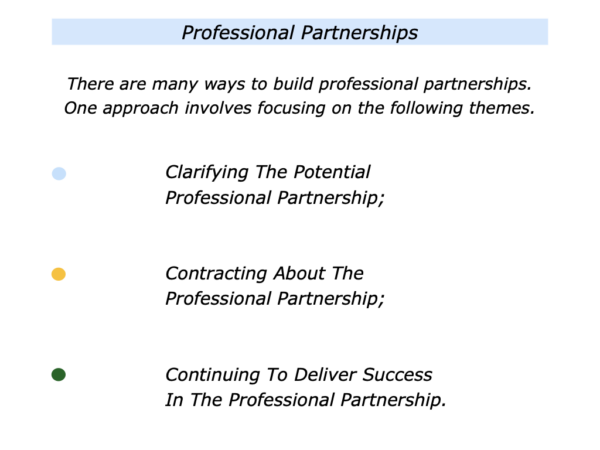
There are many ways to build professional partnerships. This article explores one approach where you may aim to help an individual, team or organisation to achieve success.
Imagine that you are a potential supplier to a customer. You may provide services as a specialist, trusted advisor, consultant or another kind of professional.
The following sections describe how you may be able to build a partnership that delivers success. This involves going through the following steps.
Clarifying The Potential
Professional Partnership
Imagine you that you may have the opportunity to provide services to a customer. There are many ways to focus on the possible ways you can help them. One approach is to go through the following steps.
You can clarify the potential
customer’s specific goals
The first step is to understand the potential customer’s world and their goals. One approach is to do your research and use your imagination to explore the following questions.
Who is the potential customer? What is happening in their world? What may be the challenges they face? What may be their specific goals? What are their organisation’s goals?
Imagine that you have explored these themes. You may then want to do the following exercise.
The Potential Customer
The specific goals they may want
to achieve in their work may be:
To …
To …
To …
You can add to this list as you get more information about the customer’s challenges and goals. When appropriate, you can move on to the next stage.
You can clarify the professional skills you
can offer to help them to achieve their goals
This step involves focusing on the following themes. You can aim: a) to clarify your own professional strengths and skills; b) to clarify how you can use these to help the customer to achieve success.
Bearing in mind the customer’s goals, you may want to explore the following questions.
What are my professional strengths and skills? How can I use these to help the potential customer to achieve their goals? What are the specific results I can deliver for them? What will be the benefits of delivering these results – for the potential customer and their organisation?
Let’s assume you have clarified how you may be able to help the potential customer. When appropriate, you can move on to the next stage.
You can meet with the potential customer and, if appropriate,
agree on the potential professional partnership
Imagine that you are going to meet with the potential customer. It will then be important to follow a golden rule:
The meeting is about them. It is not about you.
You may aim to eventually get some business from the customer’s organisation. Depending on your style, however, you may prefer to act as a trusted advisor rather than try to do a hard sell.
Let’s assume you are going to meet with the potential customer. You may want to provisionally agree with them ahead of time on the possible agenda.
You will do this in your own way. One approach is to send them something like the following email.
Hello …
Looking forward to meeting with you on …
As far as understand it from our earlier conversations,
some of the topics it may be good to explore would be:
*
*
*
Let me know if these topics are still appropriate or if there are any other that it would be valuable to explore.
We will, of course, finalise the agenda when we meet. We will then focus on how to help you and your organisation to continue to achieve success.
The next step will be to meet the potential customer. You will aim to create a positive environment and agree on the topics to explore. If appropriate, you may then aim:
To show you understand the person’s world, the challenges they face and specific goals they want to achieve;
To, in your own way, share ideas, knowledge and tools they can use to achieve their goals;
To, if appropriate, explore the possible ways forward to build a potential professional partnership for helping them to achieve their goals.
Let’s assume that you have clarified the specific goals the potential customer wants to achieve. As mentioned above, you may then share knowledge that they and their organisation can use to achieve these goals.
Different people do this in different ways. One approach is to act as a trusted advisor. Bearing in mind your strengths and specialist knowledge, it is:
To explain the possible options going forwards for achieving their goals;
To share knowledge and practical tools they can use to achieve their goals;
To do this in a way that resonates with the person and enables them to achieve their goals.
Imagine that you have taken these steps. Much then depends on the potential customer’s reactions. These may include the following kinds of responses.
They may simply listen and process the ideas in their own way;
They may thank you for the ideas and say they may get back to you;
They may show an interest in the ideas and say something along the lines of: “How can we take this further?”
Let’s assume they say they are interested in your help. They may ask you to send a specific proposal. Alternatively, they may immediately want to discuss the practical ways you can partner with them to help them achieve success.
If appropriate, you can focus on the possible ways forward. For example, they may want you either: a) to deliver a pilot project; b) to then, if it works, to deliver a big piece of work. Whatever route they take, it can then lead to the next stage.
Contracting About The
Professional Partnership
Imagine the potential customer would like you to work with them. Bearing this in mind, it can be useful to make clear contracts in the following areas.
The specific results to be delivered
when doing the piece of work
You can agree on the outcomes to be delivered. These may, for example, focus on specific results you can help them to achieve in the areas of profits, product quality or people.
The specific strategies to be followed
to achieve the desired results
You can agree on the key strategies to follow to give yourselves the greatest chance of success. You can then implement these by using your strengths to help the customer to achieve their goals.
The specific responsibilities in
working to achieve the desired results
You can make clear contracts about these responsibilities. You can agree on both your and the organisation responsibilities in working to achieve the goals.
The specific support required when
working to achieve the desired results
You can clarify the kinds of support that may be required to increase the chances of success. These can include both the practical and psychological support
The specific measures that will show
you have delivered the desired results
You can describe the specific things that will have been achieved or that will happening that will show the results have been delivered. You can then continually check the ongoing progress towards achieving these goals.
There are many ways to make such a contract when building professional partnerships. The following pages provide one framework that can be used to make clear contracts.
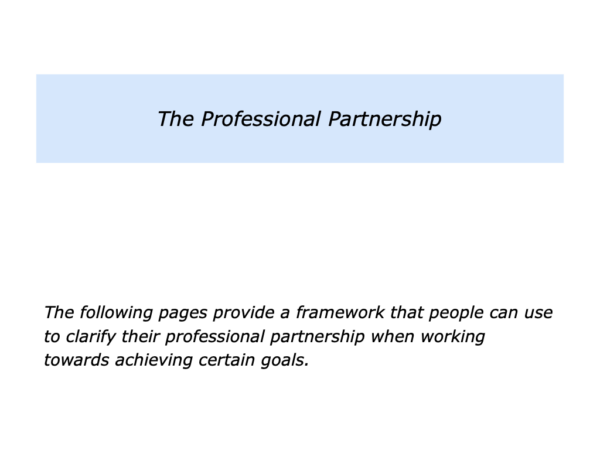
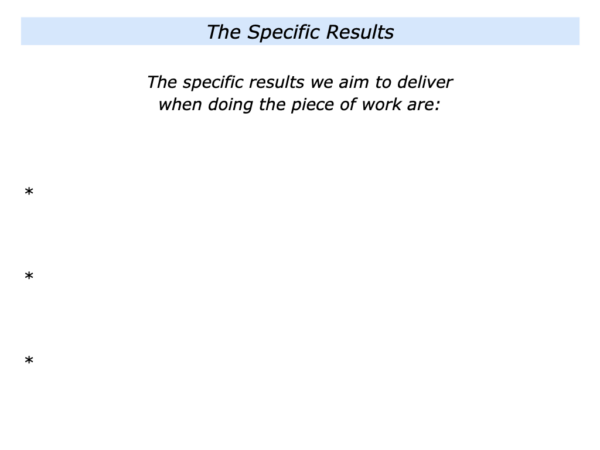
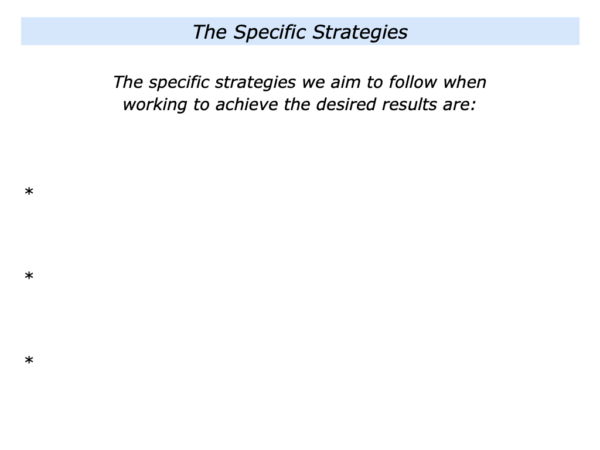
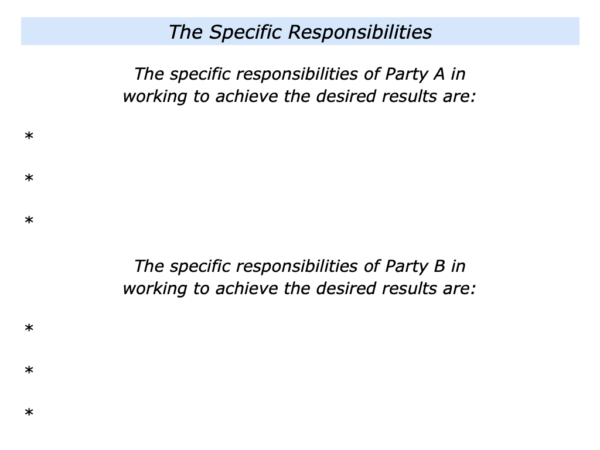
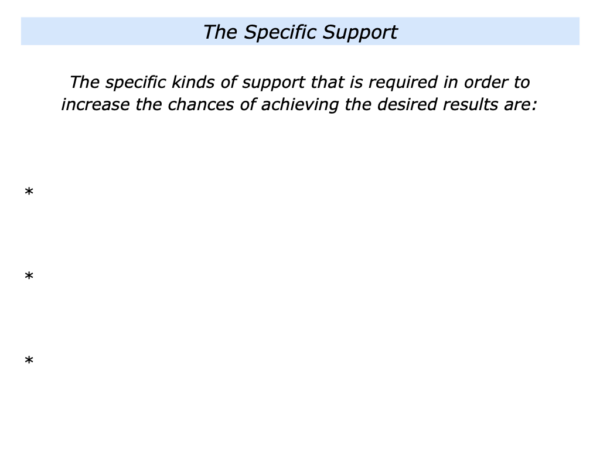
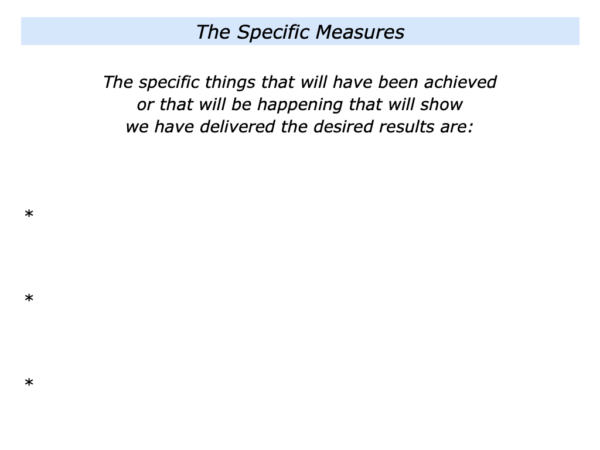
Continuing To Deliver Success
In The Professional Partnership
Imagine that you have made clear contracts about doing a piece of work for the customer. Different people then follow different approaches to doing such work. One person expressed this in the following way.
“I imagine that I am on the rolling contract that has to be signed off every month. So I always do my best to help the customer to achieve success.”
You will have your own approach. Bearing in mind the results to achieve, you may also focus on the following themes.
You can perform superb work
and get some quick successes
You can follow the agreed strategies and perform superb work. You can also get some quick successes. These will reassure the key stakeholders and also buy time to get on with the work.
You can proactively keep people informed about
the progress towards achieving the agreed goals
Your backers and other key stakeholders may sometimes worry. Bearing this in mind, it can be useful to proactively keep them informed about the progress being made towards achieving the goals.
You can deliver the desired
results and add that touch of class
You can keep performing superb work and find solutions to challenges. Entering the final straight, you can deliver the goods and add that touch of class. Sometimes this can lead to you being asked to do another piece of work for the customer.
Looking ahead, can you think of a situation where you may follow elements of the professional partnerships approach? How can you do this in your own way? If you wish, try tackling the exercise on this theme.
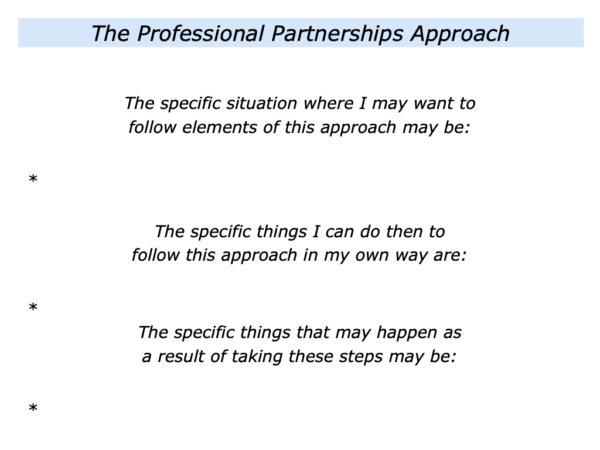






Leave a Reply